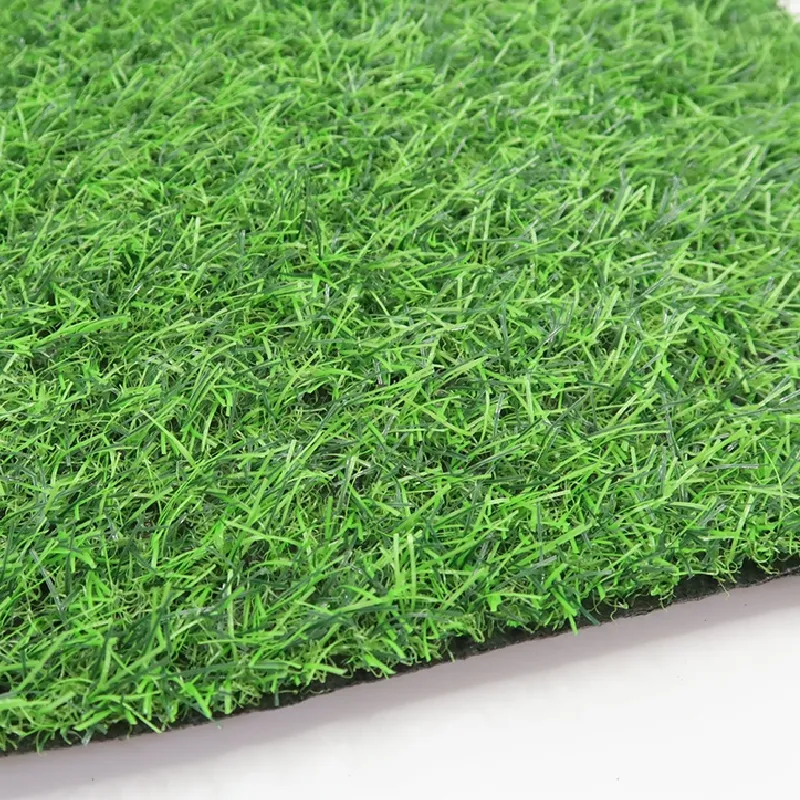
- Afrikaans
- Arabic
- Belarusian
- Bengali
- Czech
- Danish
- Dutch
- English
- Esperanto
- Estonian
- Finnish
- French
- German
- Greek
- Hindi
- Hungarian
- Icelandic
- Indonesian
- irish
- Italian
- Japanese
- kazakh
- Rwandese
- Korean
- Kyrgyz
- Lao
- Latin
- Latvian
- Malay
- Mongolian
- Myanmar
- Norwegian
- Persian
- Polish
- Portuguese
- Romanian
- Russian
- Serbian
- Spanish
- Swedish
- Tagalog
- Tajik
- Thai
- Turkish
- Turkmen
- Ukrainian
- Urdu
- Uighur
- Uzbek
- Vietnamese
Installing Synthetic Turf Over Natural Soil Surface
Nov . 06, 2024 09:31 Back to list
Laying Artificial Grass on Soil A Comprehensive Guide
In recent years, the popularity of artificial grass has surged as homeowners and businesses alike look for low-maintenance, durable, and aesthetically pleasing landscaping solutions. Unlike traditional turf, artificial grass eliminates the need for mowing, watering, and fertilizing, making it a practical choice for various applications. However, the installation process requires careful planning and execution to ensure a successful outcome. This article outlines the steps for laying artificial grass on soil, focusing on key factors that contribute to a long-lasting and visually appealing result.
Understanding the Benefits
Before diving into the installation process, it's important to understand why artificial grass has become such a favored option. Not only does it conserve water and reduce maintenance costs, but it also provides a consistently green and lush appearance year-round. For homes with pets or children, artificial grass can offer a safe play surface that withstands heavy foot traffic.
Preparing the Soil
The first step in the process is preparing the soil where the artificial grass will be laid. This preparation is critical for preventing future issues such as uneven surfaces, drainage problems, or grass separation.
1. Clear the Area Start by removing any existing grass, weeds, rocks, or debris from the area. You can use a shovel or rent a sod cutter for larger areas. 2. Check for Levelness After clearing, assess the flatness of the soil. Any bumps or depressions should be addressed to create a smooth base. You can achieve a level surface by adding or removing soil as needed.
3. Compacting the Soil To prevent settling, compact the soil using a hand tamper or a plate compactor. This step helps create a solid base that supports your new grass.
4. Install a Weed Barrier To prevent weeds from growing through the artificial grass, consider laying down a weed barrier fabric. Cut it to fit the area and secure it with landscape fabric staples.
Adding a Base Material
Once the soil is prepared, it’s time to add a base material. This layer will enhance drainage while providing a stable surface for the artificial grass.
1. Select Base Material Using crushed stone or a mixture of decomposed granite and sand is recommended for the base. The material should be porous to facilitate water drainage.
laying artificial grass on soil

2. Spread the Base Material Pour a layer of the base material (about 1-2 inches thick) over the weed barrier. Evenly distribute it across the area with a rake.
3. Compact the Base Just like the soil, you’ll want to compact the base material. This will ensure a stable and even foundation for the artificial grass.
Installing the Artificial Grass
Now comes the exciting part—laying down the artificial grass!
1. Roll Out the Grass Start by rolling out the artificial grass over the prepared base. Make sure to lay it in the desired direction to create a uniform look.
2. Cutting and Fitting Use a sharp utility knife to cut the grass to fit the area, ensuring that seams are tight and aligned. It's best to plan your cuts ahead of time to minimize waste.
3. Secure the Grass Use landscape staples or nails to secure the edges of the grass. If you have any seams, apply turf adhesive as needed to prevent separation.
4. Add Infill Material Depending on the type of artificial grass, adding infill material (such as crumb rubber or silica sand) can enhance the final appearance and provide added stability. Spread the infill evenly and brush the grass to distribute it.
Final Touches
Once the artificial grass is laid, take a step back and admire your work! You may want to give the grass a light brushing or a gentle rinse to eliminate any dust or debris. Regular maintenance involves just occasional brushing and rinsing to keep it looking fresh.
Conclusion
Laying artificial grass on soil can be an rewarding DIY project that transforms your outdoor area. With proper preparation, execution, and care, you can enjoy the benefits of a beautiful green lawn without the hassle of traditional grass maintenance. Whether for a garden, play area, or recreational space, artificial grass provides a practical and attractive solution for modern landscaping.
-
The Benefits of Artificial Turf for Indoors
NewsJul.15,2025
-
How Artificial Grass Suppliers Ensure Quality Products
NewsJul.15,2025
-
Artificial Grass and Pets: A Space for Relaxation
NewsJul.08,2025
-
Balcony & Outdoor Decoration with Artificial Grass
NewsJul.08,2025
-
Best Indoor Artificial Grass for Home
NewsJul.07,2025
-
Best Pet Turf for Dogs: Safe & Durable Artificial Grass Options
NewsJul.07,2025
Products categories









